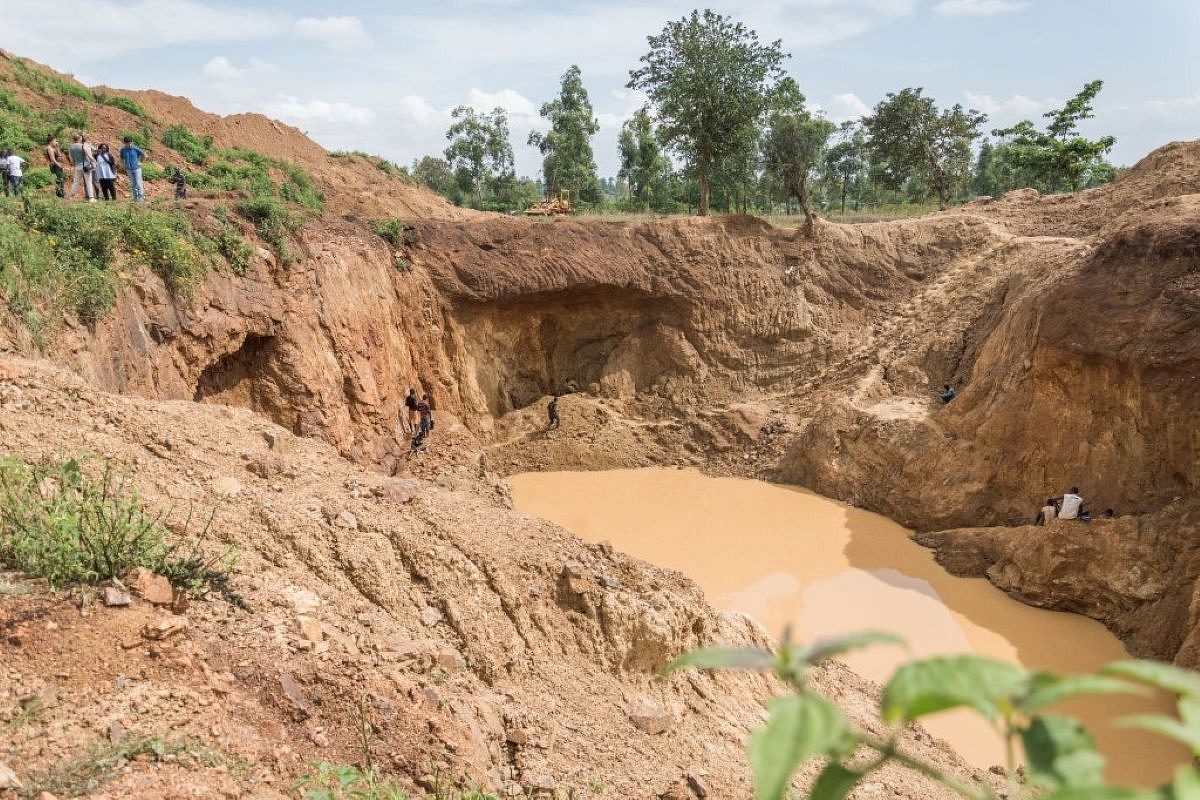Context
Uganda Discovers Over 31 Million Tonnes Of Gold Ore — Things To Know Quickly

A gold mine in Busia, Uganda
Uganda, a country in Eastern Africa, has recently announced the discovery of a deposit of 31 million tonnes of gold ore, with extractable pure gold estimated to gross 320,000 tonnes worth over $12.8 trillion.
How it was uncovered: Over the last two years, aerial exploration was done across the country, followed by geophysical and geochemical surveys and analyses, Solomon Muyita, spokesperson for Uganda's Ministry of Energy and Mineral Development, told Reuters.
Most of the deposits were discovered in Karamoja, a parched sprawling area in the country's northeastern corner on the border with Kenya.
The move follows President Yoweri Museveni government's attempts to ramp up investment in mining to develop resources like copper, iron ore, gold, cobalt, and phosphates.
Plausibility of the find: The numbers put out by the Ugandan mining ministry drew some scepticism. A great deal of gold ore is required to produce a single gram of refined gold.
Typically, a high-quality underground gold mine will yield 8-10 grams of refined gold per metric tonne of gold ore, according to the World Gold Council (WGC), while a marginal-quality mine generates 4-6 grams per metric tonne.
If one settles on a rough average of 7 grams of refined gold per metric tonne of gold ore, it would mean that Uganda's mines will generate about 217 metric tonnes of refined gold, a far cry from the 320,158 metric tonnes of refined gold that the Ugandan government told Reuters the new find could yield.
The addition of 217 metric tonnes would raise the world's "above-ground" refined gold stock by only about one-tenth of 1 per cent.
Making it commercially viable: The Ugandan government has already licensed the Chinese firm Wagagai Gold Mining Company to start production in the Busia district in eastern Uganda.
The company recently obtained a gold production licence in March this year and has a 21-year lease to mine gold in the country.
The Chinese-run firm expects to mine and start refining around 5,000 kg of gold daily in Busia by the end of the year.
Refining: Gold mines produce rough gold, called doré, which is typically about 80 per cent pure gold. This gold doré is then sent to a refinery, where it is refined into gold of different forms and purity.
The most widely produced gold bars are the London Good Delivery bars. Refining gold locally would enhance job creation and improve social service delivery to those living close to where the mineral is extracted.
Ugandan President Museveni has called for the local refinement of the discovered gold, calling any external refinery criminal.
The Chinese Wagagai Gold Mining Company has invested $200 million in constructing a refining facility. It began building its gold refinery valued at $200 million phase-wise in the district in 2016.
What's gold: Gold is a bright, slightly reddish yellow, dense, soft, malleable, and ductile metal in its purest form. It is one of the least reactive chemical elements and is solid under standard conditions.
Gold is resistant to corrosion and most acids and has unique properties distinct from other metals.
The industrial demand for gold, especially in the electrical sector, is mainly due to excellent thermal and electrical properties.
Gold use: Most of the gold fabricated today goes into the manufacture of jewellery.
Gold is also an essential industrial metal that performs critical functions in computers, communications equipment, spacecraft, jet aircraft engines, and a host of other products.
Besides, a significant amount is consumed in dentistry and medicine. Continuing research has discovered new applications for gold as a catalyst in nanotechnology.
Gold demand is geographically diverse, but 72 per cent comes from emerging markets, with China and India representing 50 per cent of all demand. While China accounts for around 28 per cent of the global demand, India's demand accounted for around 22 per cent.
Gold availability: Gold often occurs in free elemental (native) form, as nuggets or grains, in rocks, veins, and alluvial deposits. However, gold is not a rare metal.
Still, it's difficult and expensive to find and extract the same in large quantities. It is rarely found in concentrations that make extraction economically viable.
Gold explorers conduct geological surveys to support a profitable mining project targeting concentration levels that are 1,000 times higher than normal.
Gold reserves worldwide: According to Mineral Commodity Summaries, 2021, by the United States Geological Survey (USGS), the estimated world reserves of gold were about 53,000 tonnes of metal content.
Gold reserves are mainly located in Australia (10,000 tonnes), Russia (7,500 tonnes), the US (3,000 tonnes), South Africa (2,700 tonnes), Peru (2,700 tonnes), Indonesia (2,600 tonnes), and Brazil (2,400 tonnes).
The top five leading gold-producing countries were China, Australia, Russia, the US, and Canada.
India's share in the global gold production is less than 0.05 per cent.
Support Swarajya's 50 Ground Reports Project & Sponsor A Story
Every general election Swarajya does a 50 ground reports project.
Aimed only at serious readers and those who appreciate the nuances of political undercurrents, the project provides a sense of India's electoral landscape. As you know, these reports are produced after considerable investment of travel, time and effort on the ground.
This time too we've kicked off the project in style and have covered over 30 constituencies already. If you're someone who appreciates such work and have enjoyed our coverage please consider sponsoring a ground report for just Rs 2999 to Rs 19,999 - it goes a long way in helping us produce more quality reportage.
You can also back this project by becoming a subscriber for as little as Rs 999 - so do click on this links and choose a plan that suits you and back us.
Click below to contribute.
Latest